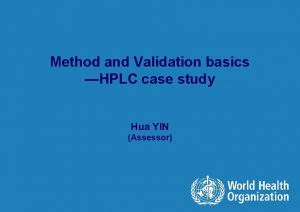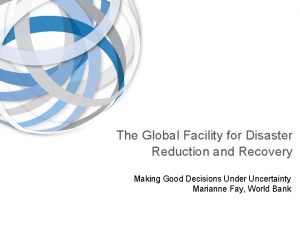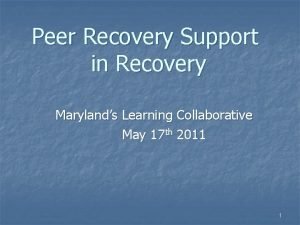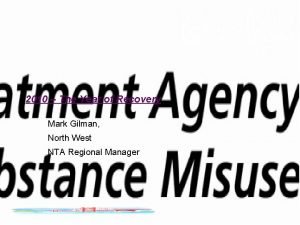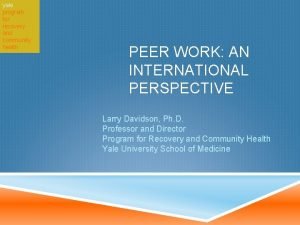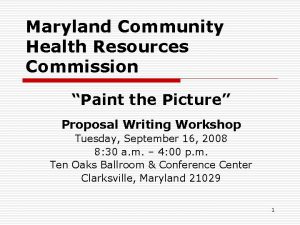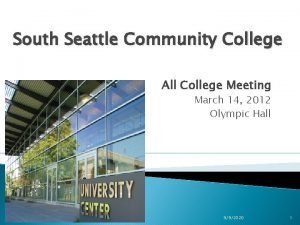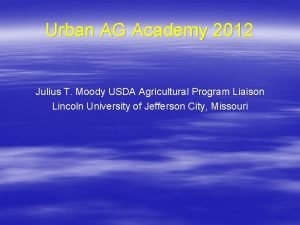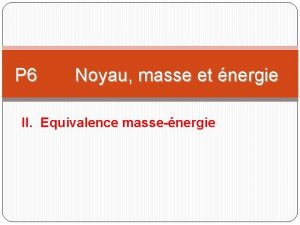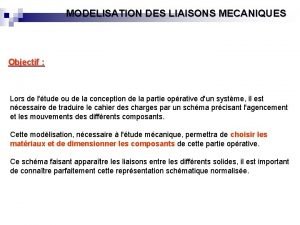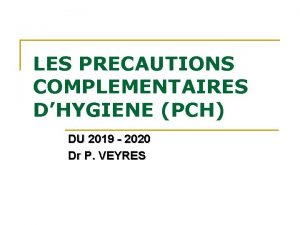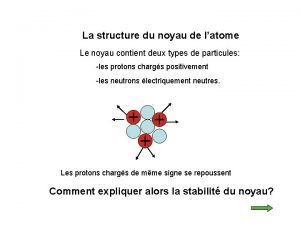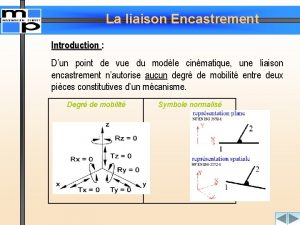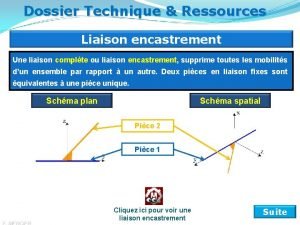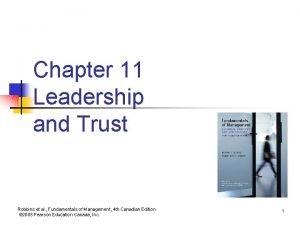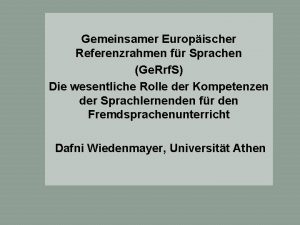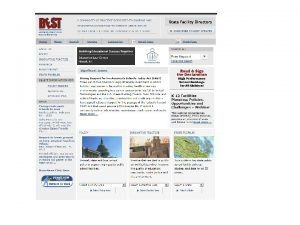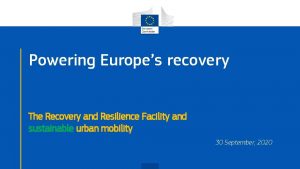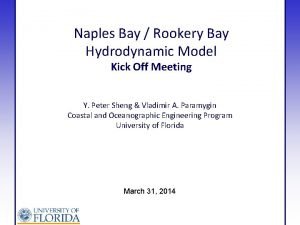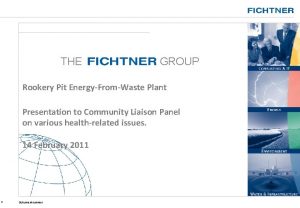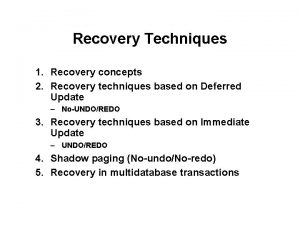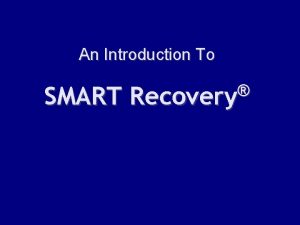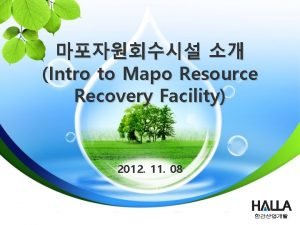Rookery South Resource Recovery Facility RRF Community Liaison






































- Slides: 38

Rookery South Resource Recovery Facility (RRF) Community Liaison Panel Transport Presentation – 14 th December 2009 John Hopkins, Peter Brett Associates

Introduction § Today’s presentation will provide additional information on: – traffic flows from Covanta’s RRF; – future forecast traffic flows on the highway; – traffic impact and junction capacity assessments; – environmental impact; – construction traffic flows. Obviously, although all this is work in progress, Covanta remain committed to keeping the CLP fully informed throughout this process.

Rookery South RRF Context § 64 staff employed on site every day; § RRF operation to work “ 24 -7”; § waste to be delivered into the site Monday to Saturday only; § anticipated 182 HGV deliveries per day for Nominal throughput of 585, 000 tpa; § a highly theoretical Maximum 318 HGV deliveries per day also assessed for 645, 000 tpa throughput; § all HGV access via Green Lane.

Vehicle trip distribution § Covanta will commit to a Route Management Plan to ensure delivery contractor HGV compliance; § except for employees residing locally, employees will be contractually required to be routed via Green Lane; § different distributions for HGV movements and employees anticipated as: Distribution HGVS Employees East – from Stewartby 0% * 11% North – along old / new A 421 27 - 36% 70% South – along old / new A 421 64 - 73% 15% West – via Wootton 0% * 4% * except for council household waste collection in the local area

HGV movement times - context § unknown waste material sources - difficulty providing definitive information whilst contractual procurement negotiations ongoing; § Rookery South RRF delivery times need to respond to the clients’ requirements; § delivery times therefore set by planning parameters; § informed and advised by the Acoustics Assessment, showing additional delivery noise within acceptable standards (work still ongoing with the EHOs); § maintaining operational flexibility to respond to future changes - within agreed limits.

Proposed HGV movement times § HGV movements limited to 05: 00 to 23: 00; § HGV movements in the first hour (05: 00 - 06: 00) relate to parked bulk haulage vehicles leaving empty only – up to 15 outbound trips; § first deliveries from 06: 00 to 07: 00 - up to 20 HGV movements; § majority of deliveries (76% - 87%) anticipated from 08: 00 to 17: 00; § Covanta is seeking future operational flexibility.

Daily Arrival Patterns - Nominal § For the Nominal (585 ktpa) throughput, weekday two-way flows: Time Commentary HGVs Cars / Buses Drivers in, bulk haulage lorries leaving 0 0 0 7 0 0 0 9 40 40 22 23 32 50 13 33 17 6 2 3 34 24 44 42 6 0 3 10 2 2 23 29 1800 - 1900 - 2000 - 2100 - 2200 - 2300 - 0000 0 0 0 10 6 0 0 TOTAL 364 168 0000 - 0100 - 0200 - 0300 - 0400 - 0500 - 0600 - 0700 - 0800 - 0900 - 1000 - 1100 - 1200 - 1300 - 1400 - 1500 - 1600 - 1700 - 1800 First C and I deliveries arriving Bulk haulage lorries return, drivers off

Daily Arrival Patterns - Maximum § For the Maximum (645 ktpa) throughput, weekday two-way flows: Time Commentary HGVs Cars / Buses Drivers in, bulk haulage lorries leaving 0 0 0 7 0 0 0 9 36 50 46 65 52 68 13 33 17 6 2 3 58 62 76 74 42 0 3 10 2 2 23 29 1800 - 1900 - 2000 - 2100 - 2200 - 2300 - 0000 0 0 0 10 6 0 0 TOTAL 636 168 0000 - 0100 - 0200 - 0300 - 0400 - 0500 - 0600 - 0700 - 0800 - 0900 - 1000 - 1100 - 1200 - 1300 - 1400 - 1500 - 1600 - 1700 - 1800 First C and I deliveries arriving Bulk haulage lorries return, drivers off

Questions and Answers

A 421 Traffic Model - included development

Forecast Traffic Flows – Nominal Throughput - All Vehicle Daily flows Additional RRF Flows § Green Lane – West – 517 vehicles – East – 15 cars § Stewartby Way – 15 cars § Old A 421 – North – 216 vehicles – South – 301 vehicles

Forecast Traffic Flows – Nominal Throughput – All Vehicle AM Peak Hour flows Additional RRF Flows § Green Lane – West – 75 vehicles – East – 6 cars § Stewartby Way – 6 cars § Old A 421 – North – 48 vehicles – South – 28 vehicles

Forecast Traffic Flows – Nominal Throughput - Heavy Goods Vehicle Daily flows Additional RRF Flows § Green Lane – West – 364 HGVs (Landfill – 320 – until Dec 2014) – East – 0 HGVs § Stewartby Way – 0 HGVs § Old A 421 – North – 101 HGVs – South – 263 HGVs (Excluding the local waste collections)

Forecast Traffic Flows – Nominal Throughput - Heavy Goods Vehicle AM Peak Hour flows Additional RRF Flows § Green Lane – West – 22 HGVs – East – 0 HGVs § Stewartby Way – 0 HGVs § Old A 421 – North – 6 HGVs – South – 16 HGVs (Excluding the local waste collections)

Forecast Traffic Flows – Maximum Throughput - All Vehicle Daily flows Additional RRF Flows § Green Lane – West – 804 vehs – East – 15 cars § Stewartby Way – 15 cars § Old A 421 – North – 376 vehs – South – 428 vehs

Forecast Traffic Flows – Maximum Throughput - All Vehicle AM Peak Hour flows Additional RRF Flows § Green Lane – West – 99 vehs – East – 6 cars § Stewartby Way – 6 cars § Old A 421 – North – 65 vehs – South – 34 vehs

Forecast Traffic Flows – Maximum Throughput - Heavy Goods Vehicle Daily flows Additional RRF Flows § Green Lane – West – 636 HGVs (Landfill – 320 – until Dec 2014) – East – 0 HGVs § Stewartby Way – 0 HGVs § Old A 421 – North – 261 HGVs – South – 375 HGVs (Excluding the local waste collections)

Forecast Traffic Flows – Maximum Throughput - Heavy Goods Vehicle AM Peak Hour flows Additional RRF Flows § Green Lane – West – 46 HGVs – East – 0 HGVs § Stewartby Way – 0 HGVs § Old A 421 – North – 23 HGVs – South – 23 HGVs (Excluding the local waste collections)

Traffic Impact Summary - 2014 (all impacts relate to the Nominal throughput) § Green Lane (East of Site Access) – Daily - 0. 4% All Vehicle, 0% HGV; – AM Peak - 1% All Vehicle, 0% HGV; § Green Lane (West of Site Access) – Daily - 23% All Vehicle, 448% HGV; – AM Peak - 20% All Vehicle, 230% HGV; § Stewartby Way – Daily - 0. 4% All Vehicle, 0% HGV; – AM Peak - 1% All Vehicle, 0% HGV;

Traffic Impact Summary (all impacts relate to the Maximum throughput) § Old A 421 (North) – Daily - 6% All Vehicle, 33% HGV; – AM Peak - 10% All Vehicle, 24% HGV; § Old A 421 (South) – Daily - 5% All Vehicle, 22% HGV; – AM Peak - 3% All Vehicle, 13% HGV;

Questions and Answers

Junction Capacity Summaries Site Access / Green Lane Junction § PARAMICS runs to follow – Nominal throughput – Maximum throughput

Junction Capacity Summaries - AM Green Lane / A 421 Priority Junction Source - Google Maps § 2014 - Without RRF – RFC – Queue = 0. 547 = 2 vehicles § 2014 - With RRF – RFC – Queue = 0. 598 = 2 vehicles

Junction Capacity Summaries A 421 / Marston Moretaine Junction § Marston Northern Roundabout Plan supplied by Jacobs Consultancy – 2014 - Without RRF § RFC § Queue = 1. 15 (Beancroft Rd (N) = 55 vehicles – 2014 - With RRF § RFC § Queue = 1. 18 (Beancroft Rd (N) = 64 vehicles

Junction Capacity Summaries A 421 / Marston Moretaine Junction § Marston Middle Roundabout – 2014 - Without RRF § RFC § Queue = 0. 84 = 5 vehicles – 2014 - With RRF § RFC § Queue = 0. 86 = 6 vehicles Plan supplied by Jacobs Consultancy

Junction Capacity Summaries A 421 / Marston Moretaine Junction § Marston Southern Roundabout – 2014 - Without RRF § RFC § Queue = 0. 75 = 3 vehicles – 2014 - With RRF § RFC § Queue = 0. 76 = 3 vehicles Plan supplied by Jacobs Consultancy

Junction Capacity Summaries Marsh Leys Roundabout – part signalised § Without RRF – Do. S = 88% (Western Bypass arm) – Queue = 13 § With RRF – Do. S = 89% (Western Bypass arm) – Queue = 14 Drawing supplied by Jacobs Consultancy

Questions and Answers

Environment impact of traffic flows § “Magnitude” of change in flow is identified as ‘large’, ‘medium’, ‘small’ or ‘negligible’ according to set criteria; § “Receptors” are identified early and categorised into ‘high’, ‘medium’, ‘low’ and ‘negligible’ sensitivities based on current guidance; § the two sets of information are compared to give the “significance of effect” of the traffic. § the minimum threshold for Fear and Intimidation is set by average hourly traffic flows in excess of 600 additional all vehicle trips per hour across an 18 hour day, and total 18 hour HGV flows in excess of 1, 000. Taken from: Institute of Environmental Assessment’s Guidelines for Environmental Assessment of Road Traffic (1993) Department of Transport Manual of Environmental Appraisal (1983) Crompton and Gilbert – “Pedestrian Delay Annoyance and Risk” (1981)

Environmental Impact of traffic flows Significance of Effects of the Traffic Sensitivity of Receptors High Medium Low Negligible e. g. Schools e. g. Congested junctions e. g. Listed Buildings Community Centres Public open space Receptors of very low sensitivity to traffic flows Accident Blackspots Residential Homes Magnitude of Change in traffic flow / Conditions (both in all vehicle and HGV) Churches Large > 90% Very Substantial Moderate Insignificant Medium 60%-90% Substantial Moderate Insignificant Small 30%-60% Moderate Slight Insignificant Negligible < 30% Insignificant

Plan Showing Sensitivity of Receptors throughout the Area

Environmental Impact of traffic flows Significance of Effects of the Traffic Sensitivity of Receptors High Medium Low Negligible e. g. Schools e. g. Congested junctions e. g. Listed Buildings Community Centres Public open space Receptors of very low sensitivity to traffic flows Accident Blackspots Residential Homes Magnitude of Change in traffic flow / Conditions (both in all vehicle and HGV) Churches Large > 90% Very Substantial Moderate Insignificant Medium 60%-90% Substantial Moderate Insignificant Small 30%-60% Moderate Slight Insignificant Negligible < 30% Insignificant

Plan showing Significance of Effect of Traffic on Sensitive Receptors

Environmental Impact of traffic Summary of Impact, Maximum throughput, 2014: § Green Lane (west of Site Access) – Magnitude of change in All Vehicle flow = ‘Negligible’ – Magnitude of change in HGV flow = ‘Large’; – no sensitive receptors; – Significance = ‘Insignificant’. § A 421

Questions and Answers

Construction trips § details cannot be confirmed until Covanta has appointed a Contractor yet; § Covanta commits to a RMP to ensure only Green Lane used by deliveries and non-local employees; § two worst case assessments: i) assuming realistic HGV inbound movements in the AM peak; ii) assuming workers coming in between 0700 – 0800 in the morning.

Construction trips § Site Access / Green Lane Junction § PARAMICS runs – Realistic HGV movements (AM peak) – Maximum Workforce movements (0700 – 0800)

Questions and Answers
 Heronwars
Heronwars Rrf in hplc
Rrf in hplc Global facility for disaster reduction and recovery
Global facility for disaster reduction and recovery Resource allocation vs resource leveling
Resource allocation vs resource leveling Perbedaan resource loading dan resource levelling
Perbedaan resource loading dan resource levelling Human resource development council of south africa
Human resource development council of south africa Old south vs new south streetcar named desire
Old south vs new south streetcar named desire Philadelphia recovery community center
Philadelphia recovery community center Recovery community
Recovery community Recovery community
Recovery community Residential treatment gilman
Residential treatment gilman Larry davidson yale
Larry davidson yale Community resource mapping template
Community resource mapping template Maryland community health resources commission
Maryland community health resources commission South seattle community college
South seattle community college What is the historical background of community development?
What is the historical background of community development? Community colleges in south africa
Community colleges in south africa Kyria liaison
Kyria liaison Liaison in phonetics
Liaison in phonetics Liaison phosphoanhydride
Liaison phosphoanhydride énergie de liaison d'un noyau
énergie de liaison d'un noyau Liaison ponctuelle
Liaison ponctuelle Medical liaison job description
Medical liaison job description Liaison instrument
Liaison instrument Fiche de liaison transfert patient
Fiche de liaison transfert patient A quoi sert une liaison dans un objet technique
A quoi sert une liaison dans un objet technique énergie de liaison d'un noyau
énergie de liaison d'un noyau Liaison encastrement
Liaison encastrement What is the liaison role of a manager
What is the liaison role of a manager Boue dentinaire définition
Boue dentinaire définition Organe de liaison
Organe de liaison Betty botter tongue twister
Betty botter tongue twister Liason encastrement
Liason encastrement Liaison pivot parfaite
Liaison pivot parfaite Liaison role adalah
Liaison role adalah Liaison glissière exemple
Liaison glissière exemple Liaison with external constituencies
Liaison with external constituencies Liaison hydrogéne
Liaison hydrogéne Liaison pivot exemple
Liaison pivot exemple

